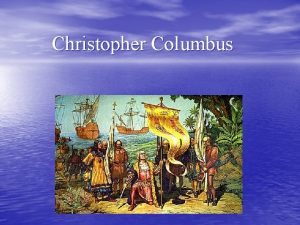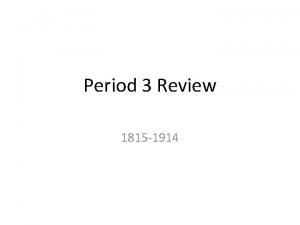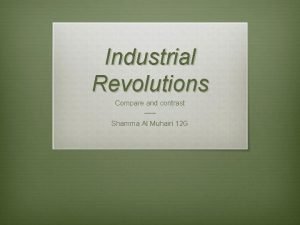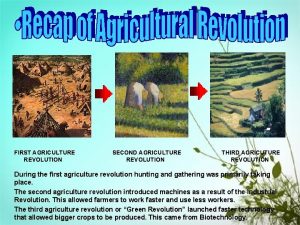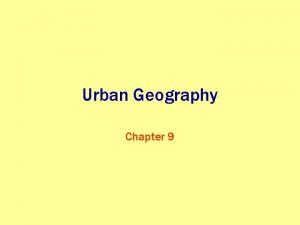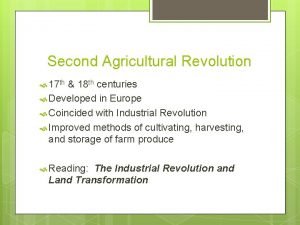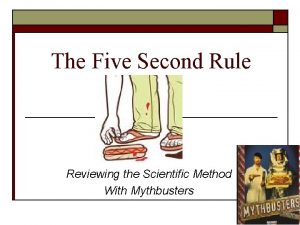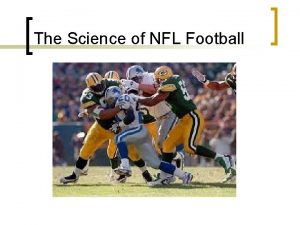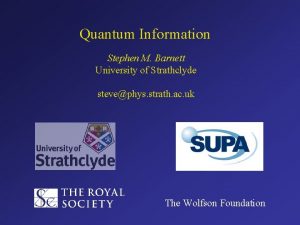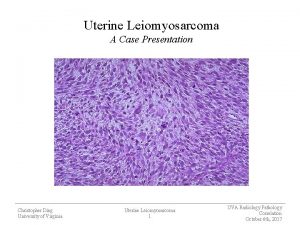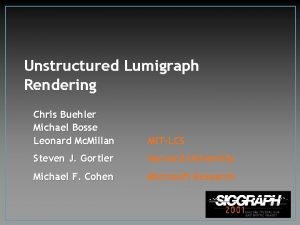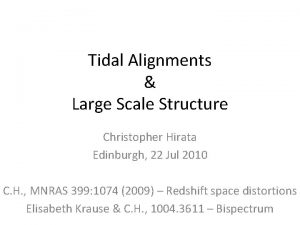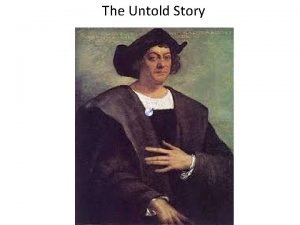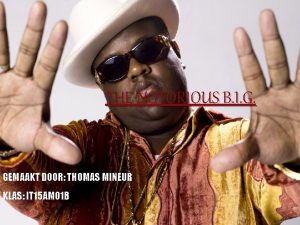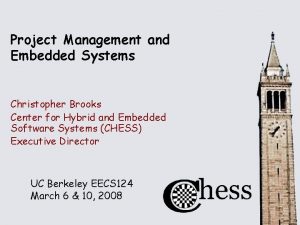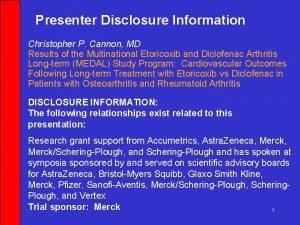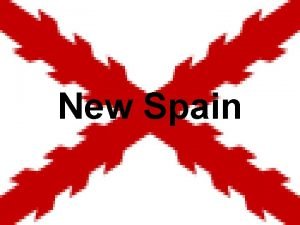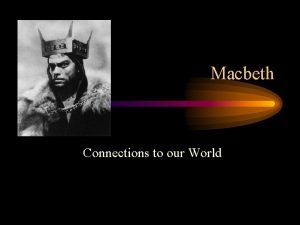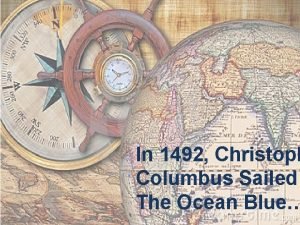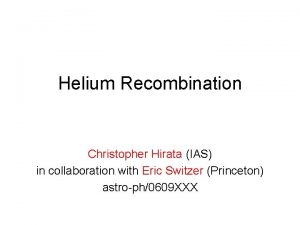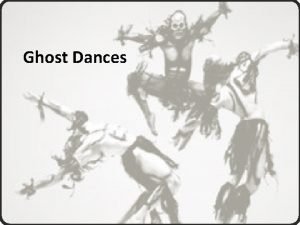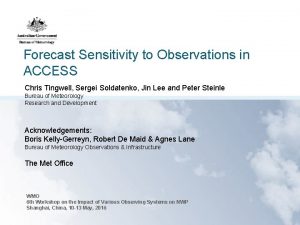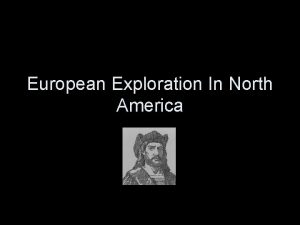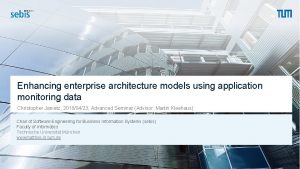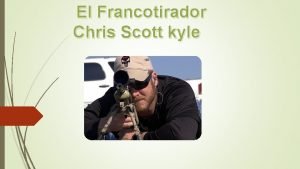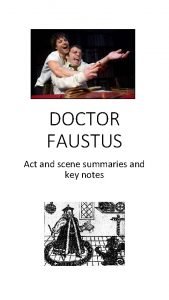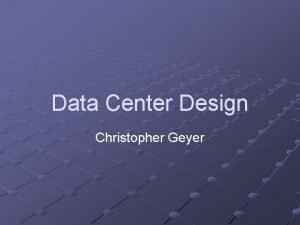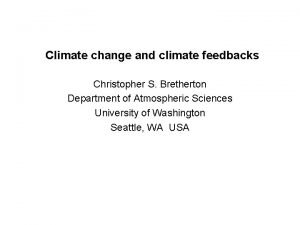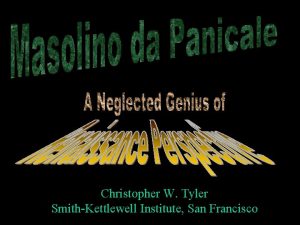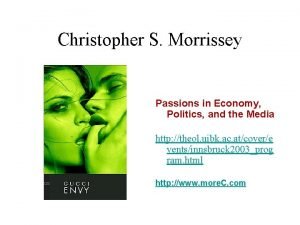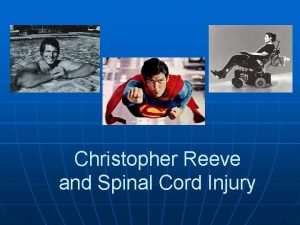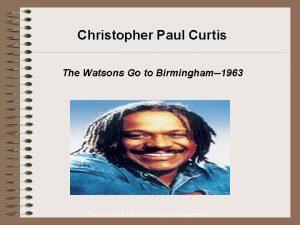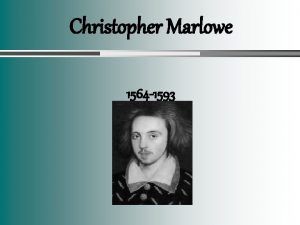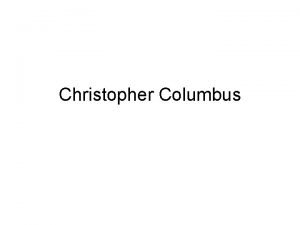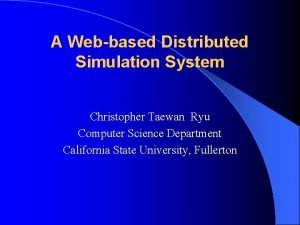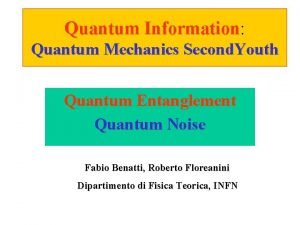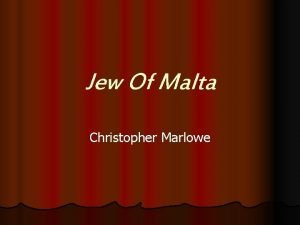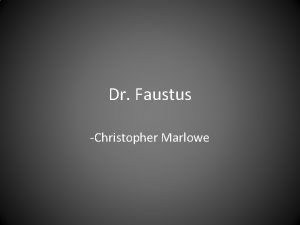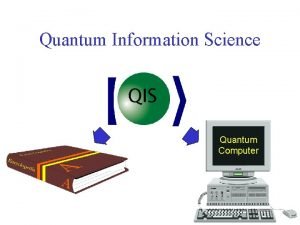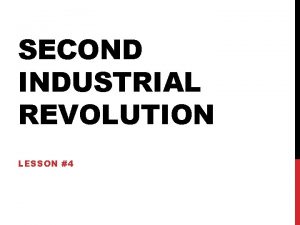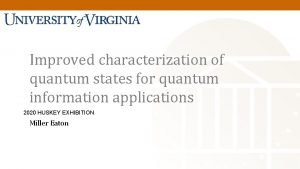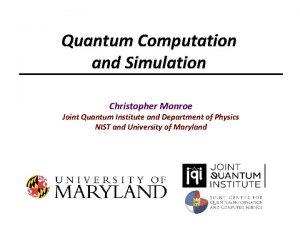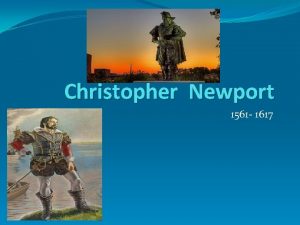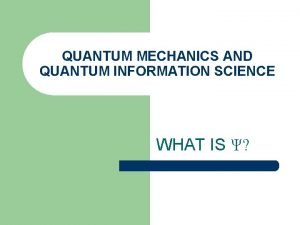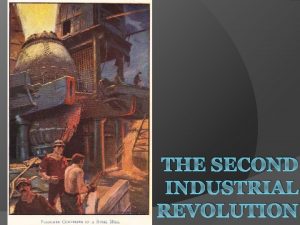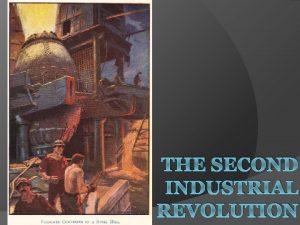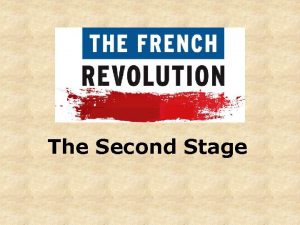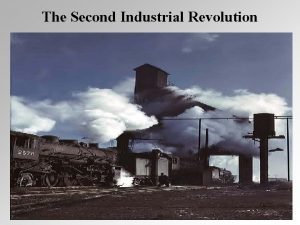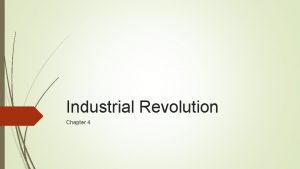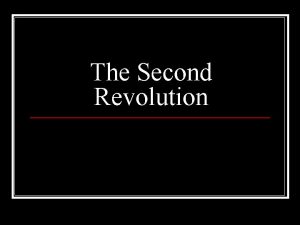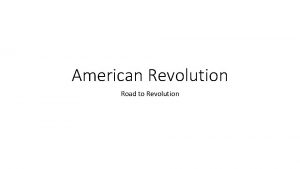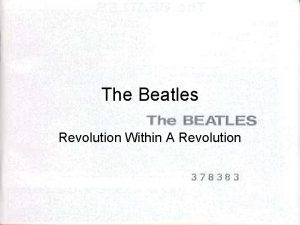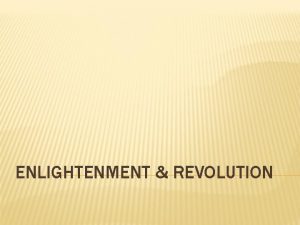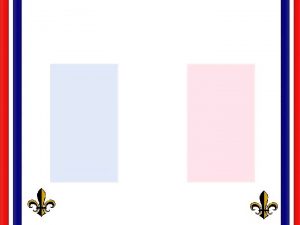Quantum Information Science A Second Quantum Revolution Christopher















![…GOOD NEWS! quantum interference depends on all inputs quantum logic gates quantum [0] + …GOOD NEWS! quantum interference depends on all inputs quantum logic gates quantum [0] +](https://slidetodoc.com/presentation_image/3d1725beb2d01d1b797cea801941b546/image-16.jpg)
![Ψ = [↑][↓] - [↓][↑] John Bell (1964) Any possible “completion” to quantum mechanics Ψ = [↑][↓] - [↓][↑] John Bell (1964) Any possible “completion” to quantum mechanics](https://slidetodoc.com/presentation_image/3d1725beb2d01d1b797cea801941b546/image-17.jpg)
![Schrödinger’s Cat (1935) [did decay][Alive] + [didn’t decay][Dead] Schrödinger’s Cat (1935) [did decay][Alive] + [didn’t decay][Dead]](https://slidetodoc.com/presentation_image/3d1725beb2d01d1b797cea801941b546/image-18.jpg)
![Entanglement: Quantum Coins Two coins in a quantum superposition 1 [H][H] & [T][T] 1 Entanglement: Quantum Coins Two coins in a quantum superposition 1 [H][H] & [T][T] 1](https://slidetodoc.com/presentation_image/3d1725beb2d01d1b797cea801941b546/image-19.jpg)
![Entanglement: Quantum Coins Two coins in a quantum superposition 1 0 [H][H] & [T][T] Entanglement: Quantum Coins Two coins in a quantum superposition 1 0 [H][H] & [T][T]](https://slidetodoc.com/presentation_image/3d1725beb2d01d1b797cea801941b546/image-20.jpg)
![Entanglement: Quantum Coins Two coins in a quantum superposition 1 0 0 [H][H] & Entanglement: Quantum Coins Two coins in a quantum superposition 1 0 0 [H][H] &](https://slidetodoc.com/presentation_image/3d1725beb2d01d1b797cea801941b546/image-21.jpg)
![Entanglement: Quantum Coins Two coins in a quantum superposition 1 0 0 1 [H][H] Entanglement: Quantum Coins Two coins in a quantum superposition 1 0 0 1 [H][H]](https://slidetodoc.com/presentation_image/3d1725beb2d01d1b797cea801941b546/image-22.jpg)













![171 Yb+ qubit 1 Probability Electronic Excited State (t ~ 8 nsec) [ ] 171 Yb+ qubit 1 Probability Electronic Excited State (t ~ 8 nsec) [ ]](https://slidetodoc.com/presentation_image/3d1725beb2d01d1b797cea801941b546/image-36.jpg)

![Electronic Excited State [ ] 2 1 • • • 0 Hyperfine Ground States Electronic Excited State [ ] 2 1 • • • 0 Hyperfine Ground States](https://slidetodoc.com/presentation_image/3d1725beb2d01d1b797cea801941b546/image-38.jpg)





















- Slides: 59

Quantum Information Science: A Second Quantum Revolution Christopher Monroe 18 56 Joint Quantum Institute University of Maryland Department of Physics www. iontrap. umd. edu

Joint Quantum Institute Quantum science for tomorrow’s technology

Computer Science and Information Theory Charles Babbage (1791 -1871) mechanical difference engine Alan Turing (1912 -1954) universal computing machines Claude Shannon (1916 -2001) quantify information: the bit

ENIAC (1946)

The first solid-state transistor (Bardeen, Brattain & Shockley, 1947)

Source: Intel

“There's Plenty of Room at the Bottom” (1959) Richard Feynman “When we get to the very, very small world – say circuits of seven atoms - we have a lot of new things that would happen that represent completely new opportunities for design. Atoms on a small scale behave like nothing on a large scale, for they satisfy the laws of quantum mechanics…”

Quantum Mechanics: A 20 th century revolution in physics • • Why doesn’t the electron collapse onto the nucleus of an atom? Why are thermodynamic anomalies in materials at low temperature? Why is light emitted at discrete colors? . . Erwin Schrödinger (1887 -1961) Albert Einstein (1879 -1955) Werner Heisenberg (1901 -1976)

The Golden Rules of Quantum Mechanics 1. Quantum objects are waves and can be in states of superposition. “qubit”: [0] & [1] 2. Rule #1 holds as long as you don’t look! [0] & [1] or [0] [1]

Most of 20 th century quantum physics concerned with rule #1: • Wave mechanics • Quantized energy • Low temperature phenomena e. g. , superfluidity, BEC • Quantum Electrodynamics (QED) e. g. , magnetism of the electron: ge = 2. 00231930439 (agrees w/ theory to 12 digits) • Nuclear physics • Particle physics

A new science for the 21 st Century? Information Quantum Mechanics 20 th Century Theory Quantum Information Science 21 st Century

What if we store information in quantum systems? classical bit: 0 or 1 quantum bit: a[0] + b[1]

GOOD NEWS… quantum parallel processing on 2 N inputs Example: N=3 qubits = a 0 [000] + a 1[001] + a 2 [010] + a 3 [011] a 4 [100] + a 5[101] + a 6 [110] + a 7 [111] f(x) …BAD NEWS… Measurement gives random result e. g. , [101] f(x)

…GOOD NEWS! quantum interference quantum logic gates depends on all inputs Deutsch (1985) Shor (1994) fast number factoring Grover (1996) fast database search N = p q

# articles mentioning “Quantum Information” or “Quantum Computing” 2000 1500 1000 Quantum Computers and Computing Nature Science Phys. Rev. Lett. Phys. Rev. Institute of Computer Science Russian Academy of Science ISSN 1607 -9817 0 1991 1992 1993 1994 1995 1996 1997 1998 1999 2000 2001 2002 2003 2004 2005 2006 500
![GOOD NEWS quantum interference depends on all inputs quantum logic gates quantum 0 …GOOD NEWS! quantum interference depends on all inputs quantum logic gates quantum [0] +](https://slidetodoc.com/presentation_image/3d1725beb2d01d1b797cea801941b546/image-16.jpg)
…GOOD NEWS! quantum interference depends on all inputs quantum logic gates quantum [0] + [1] NOT gate: [1] - [0] quantum [0] XOR gate: [0] [1] [1] [0] [1] e. g. , ([0] + [1]) [0][0] + [1][1] superposition entanglement [0]
![Ψ John Bell 1964 Any possible completion to quantum mechanics Ψ = [↑][↓] - [↓][↑] John Bell (1964) Any possible “completion” to quantum mechanics](https://slidetodoc.com/presentation_image/3d1725beb2d01d1b797cea801941b546/image-17.jpg)
Ψ = [↑][↓] - [↓][↑] John Bell (1964) Any possible “completion” to quantum mechanics will violate local realism just the same
![Schrödingers Cat 1935 did decayAlive didnt decayDead Schrödinger’s Cat (1935) [did decay][Alive] + [didn’t decay][Dead]](https://slidetodoc.com/presentation_image/3d1725beb2d01d1b797cea801941b546/image-18.jpg)
Schrödinger’s Cat (1935) [did decay][Alive] + [didn’t decay][Dead]
![Entanglement Quantum Coins Two coins in a quantum superposition 1 HH TT 1 Entanglement: Quantum Coins Two coins in a quantum superposition 1 [H][H] & [T][T] 1](https://slidetodoc.com/presentation_image/3d1725beb2d01d1b797cea801941b546/image-19.jpg)
Entanglement: Quantum Coins Two coins in a quantum superposition 1 [H][H] & [T][T] 1
![Entanglement Quantum Coins Two coins in a quantum superposition 1 0 HH TT Entanglement: Quantum Coins Two coins in a quantum superposition 1 0 [H][H] & [T][T]](https://slidetodoc.com/presentation_image/3d1725beb2d01d1b797cea801941b546/image-20.jpg)
Entanglement: Quantum Coins Two coins in a quantum superposition 1 0 [H][H] & [T][T] 1 0
![Entanglement Quantum Coins Two coins in a quantum superposition 1 0 0 HH Entanglement: Quantum Coins Two coins in a quantum superposition 1 0 0 [H][H] &](https://slidetodoc.com/presentation_image/3d1725beb2d01d1b797cea801941b546/image-21.jpg)
Entanglement: Quantum Coins Two coins in a quantum superposition 1 0 0 [H][H] & [T][T] 1 0 0
![Entanglement Quantum Coins Two coins in a quantum superposition 1 0 0 1 HH Entanglement: Quantum Coins Two coins in a quantum superposition 1 0 0 1 [H][H]](https://slidetodoc.com/presentation_image/3d1725beb2d01d1b797cea801941b546/image-22.jpg)
Entanglement: Quantum Coins Two coins in a quantum superposition 1 0 0 1 [H][H] & [T][T] 1 0 0 1

Entanglement: Quantum Coins Two coins in a quantum superposition 1 0 0 1 1 [H][H] & [T][T] 1 0 0 1 1

Entanglement: Quantum Coins Two coins in a quantum superposition 1 0 0 1 1 1 [H][H] & [T][T] 1 0 0 1 1 1

Entanglement: Quantum Coins Two coins in a quantum superposition 1 0 0 1 1 1 0. . . [H][H] & [T][T] 1 0 0 1 1 1 0. . .

Comments on quantum coins: 1. Doesn’t violate relativity (superluminal communication): no information transmitted in a random bit stream! 2. Application: Quantum Cryptography (a secure “one-time pad”) + plaintext KEY ciphertext KEY + plaintext

Quantum Superposition From Taking the Quantum Leap, by Fred Alan Wolf

Quantum Superposition From Taking the Quantum Leap, by Fred Alan Wolf

Quantum Superposition From Taking the Quantum Leap, by Fred Alan Wolf

Quantum Entanglement “Spooky action-at-a-distance” (A. Einstein) From Taking the Quantum Leap, by Fred Alan Wolf

Quantum Entanglement “Spooky action-at-a-distance” (A. Einstein) From Taking the Quantum Leap, by Fred Alan Wolf

Quantum Entanglement “Spooky action-at-a-distance” (A. Einstein) From Taking the Quantum Leap, by Fred Alan Wolf

Quantum Entanglement “Spooky action-at-a-distance” (A. Einstein) From Taking the Quantum Leap, by Fred Alan Wolf


Trapped Atomic Ions seven Yb+ ions ~2 mm NIST-Boulder (D. Wineland) U. Innsbruck (R. Blatt) U. Maryland & JQI (C. M. )
![171 Yb qubit 1 Probability Electronic Excited State t 8 nsec 171 Yb+ qubit 1 Probability Electronic Excited State (t ~ 8 nsec) [ ]](https://slidetodoc.com/presentation_image/3d1725beb2d01d1b797cea801941b546/image-36.jpg)
171 Yb+ qubit 1 Probability Electronic Excited State (t ~ 8 nsec) [ ] 0 0 5 10 15 20 25 # photons collected in 100 ms [ ] Hyperfine Ground States ~GHz [ ] “bright”

171 Yb+ qubit 1 Probability | 99. 7% detection efficiency Electronic Excited State (t ~ 8 nsec) | 0 0 5 10 15 20 25 # photons collected in 100 ms [ ] Hyperfine Ground States ~GHz [ ] “dark”
![Electronic Excited State 2 1 0 Hyperfine Ground States Electronic Excited State [ ] 2 1 • • • 0 Hyperfine Ground States](https://slidetodoc.com/presentation_image/3d1725beb2d01d1b797cea801941b546/image-38.jpg)
Electronic Excited State [ ] 2 1 • • • 0 Hyperfine Ground States [ ] 2 1 0 ~GHz • • • ~MHz Mapping: (a[ ] + b[ ]) [0]m [ ] (a[0]m + b[1]m) Cirac and Zoller, Phys. Rev. Lett. 74, 4091 (1995)

Trapped Ion Quantum Computer Internal states of these ions entangled Cirac and Zoller, Phys. Rev. Lett. 74, 4091 (1995)



1 mm



Ion Trap Chips NIST-Boulder Au/Quartz Maryland/LPS Ga. As/Al. Ga. As Lucent/MIT Al/Si/Si. O 2 Sandia W/Si

Teleportation of a single atom from here… to here…

we need more qubits. .


Single electron quantum dots Albert Chang (Duke Univ. )

Phosphorus atoms in Silicon qubit stored in 31 P nuclear spin (31 P: spin) (28 Si: no spin) Si lattice B. Kane, Nature 393, 133 (1998) • LPS/U. Maryland • Los Alamos • entire country of Australia

Superconducting currents quantized flux qubit states H. Mooij (Delft, Netherlands)

Superconducting currents R. Schoelkopf, Michel Devoret Steve Girvin (Yale Univ. ) quantized charge qubit states

Doped impurities in glass J. Wrachtrup (Stuttgart) Fluorescence of an array of single impurities in diamond Nitrogen + Vacancy impurity in diamond

Quantum Computer Physical Implementations works 1. Individual atoms and photons ion traps atoms in optical lattices cavity-QED 2. Superconductors Cooper-pair boxes (charge qubits) rf-SQUIDS (flux qubits) scales 3. Semiconductors quantum dots 4. Other condensed-matter electrons floating on liquid helium single phosphorus atoms in silicon

N=1 N=1028


A new science for the 21 st Century? Information Quantum Mechanics 20 th Century Theory Quantum Information Science Physics Electrical Engineering Chemistry Mathematics Computer Science Information Theory 21 st Century


Grad Students Dave Hayes Rajibul Islam Simcha Korenblit Andrew Manning Jonathan Mizrahi Steven Olmschenk Jon Sterk Postdocs Ming-Shien Chang Peter Maunz Dmitry Matsukevich Kihwan Kim Wes Campbell Le Luo Qudsia Quraishi Undergrads Guillermo Silva Andrew Chew http: //iontrap. umd. edu Collaborators Luming Duan (Michigan) Jim Rabchuk (W. Illinois) Keith Schwab (Cornell) Vanderlei Bagnato (U. Sao Paulo)
 50 examples of direct and indirect speech
50 examples of direct and indirect speech Science science science
Science science science Origin of quantum mechanics
Origin of quantum mechanics Quantum physics vs mechanics
Quantum physics vs mechanics Christopher columbus reason for exploration
Christopher columbus reason for exploration 27 miles per gallon into kilometers per liter
27 miles per gallon into kilometers per liter 2nd industrial revolution timeline
2nd industrial revolution timeline Shamma al muhairi
Shamma al muhairi Agricuture jobs
Agricuture jobs The second agricultural revolution
The second agricultural revolution Griffin ford model ap human geography
Griffin ford model ap human geography The second agricultural revolution coincided with
The second agricultural revolution coincided with Urban hearth areas definition
Urban hearth areas definition Russian revolution vs french revolution
Russian revolution vs french revolution You should hope this game will be over soon
You should hope this game will be over soon Green revolution vs third agricultural revolution
Green revolution vs third agricultural revolution 5 second rule mythbusters
5 second rule mythbusters Newton's second law of motion - science of nfl football
Newton's second law of motion - science of nfl football Quantum information stephen m. barnett
Quantum information stephen m. barnett Social science vs natural science
Social science vs natural science Main branches of science
Main branches of science Natural science vs physical science
Natural science vs physical science Applied science vs pure science
Applied science vs pure science Rapid change
Rapid change Think central science fusion
Think central science fusion Rule of 70 in population growth
Rule of 70 in population growth Windcube lidar
Windcube lidar Soft science definition
Soft science definition Christopher ding
Christopher ding Unstructured lumigraph rendering
Unstructured lumigraph rendering Christopher hirata
Christopher hirata Cma cgm christopher columbus
Cma cgm christopher columbus Thomas notorious big
Thomas notorious big Charlene gallego victims
Charlene gallego victims Devion christopher brooks
Devion christopher brooks Christopher p cannon
Christopher p cannon When did christopher columbus discover america
When did christopher columbus discover america Christopher dalley
Christopher dalley How is christopher tony sopranos nephew
How is christopher tony sopranos nephew Christopher terry iml
Christopher terry iml Amerigo vespucci time line
Amerigo vespucci time line Christopher hirata
Christopher hirata Ghost dances christopher bruce facts
Ghost dances christopher bruce facts Christopher tingwell
Christopher tingwell Facts about john cabot
Facts about john cabot Christopher janietz
Christopher janietz Scott kyle
Scott kyle Edward christopher sheeran
Edward christopher sheeran Dr faustus act 1 scene 3 summary
Dr faustus act 1 scene 3 summary Christopher geyer
Christopher geyer Christopher s. bretherton
Christopher s. bretherton Christopher w tyler
Christopher w tyler Dr christopher morrissey
Dr christopher morrissey Christopher reeve spinal cord injury level
Christopher reeve spinal cord injury level Christopher paul curtis facts
Christopher paul curtis facts Christopher marlowe biography
Christopher marlowe biography Where did columbus land
Where did columbus land Columbus voyage map
Columbus voyage map Christopher ryu
Christopher ryu The patterns of english spelling
The patterns of english spelling




